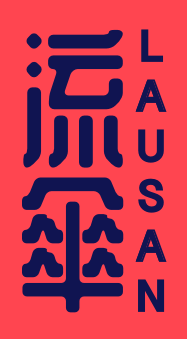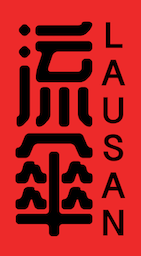Every year thousands of Hongkongers gather at Victoria Park on June 4 to commemorate the 1989 Tiananmen Massacre. Organized by the Hong Kong Alliance in Support of Patriotic Democratic Movements in China, the annual June 4 candlelight vigil also functions as a rallying cry for Hong Kong’s pro-democracy movement.
This year, the Hong Kong government—citing the social distancing policy—prohibited the Alliance from putting forth its annual vigil in Victoria Park. Any gatherings of 8 or more would be deemed illegal. In response, the Alliance has put forth a new exhibit in the June 4th Museum to highlight the similarities between the Chinese student and worker movement in 1989 and the ongoing Hong Kong protest movement. In addition to hosting an online vigil, the Alliance has also called for Hongkongers to light candles wherever they may be in the city.
The Hong Kong government’s suppression of the vigil coheres with Beijing’s ongoing censorship of the event as it undermines the regime’s public image and has the potential to incite further grassroots organizing.
After this past year of Beijing’s rampant encroachment, it is tempting to overlook the political diversity within mainland China, and treat all mainland Chinese people as supporters of the CCP. However, doing so not only ignores that mainland Chinese workers and activists have also been violently repressed by the CCP, but also erases decades of resistance within the mainland.
Despite rigorous state suppression and censorship, labor and grassroots organizing have long existed in mainland China. According to the China Labor Bulletin, there were over 1,300 worker strikes in 2019 alone. Political scientist Diana Fu further reveals that labor organizations in China have also been mobilizing workers through “micro-collective actions”: rather than participating in overtly collective actions that would likely result in swift state suppression, labor advocacy groups would coach workers on how to individually challenge the status quo in order to ensure organizational survival and movement sustainability.
With the passage of the new national security laws, Hongkongers now sit in the same boat as those in the mainland who have been similarly repressed by the CCP.
It is important to acknowledge not only that labor organizing exists in China, but also that workers played a central role in the 1989 Tiananmen Democracy Movement, alongside students and intellectuals. This, in fact, mirrors the labor organizing that has taken place during the anti-ELAB Movement with the formation of dozens of new labor unions across Hong Kong. In addition to advocating for workers’ rights, these labor unions also give workers the political and electoral power to participate in government and more successfully organize general strikes.
While this year’s June 4 vigil would not take place in Victoria Park as it has for the last 30 years, we must remember that Hong Kong’s ongoing movement comes from the same canon of radical resistance as the 1989 Tiananmen Massacre. With the passage of the new national security laws, Hongkongers now sit in the same boat as those in the mainland who have been similarly repressed by the CCP. Thus building alliances between Hong Kong and mainland activists may be the only way to cultivate a resilient and sustainable anti-authoritarian struggle that can withstand the state’s continual suppression.
The overarching vision of the Alliance and the goal for the annual commemoration has always been to foster coalitions between Hong Kong and Chinese activists in order to create a more democratic political future. In addition to organizing the annual June 4 vigil, the Alliance also campaigns for human rights struggles in mainland China, advocating for prisoners of conscience like Xiaobo Liu and Wensheng Yu. To support grassroots organizing in mainland China, they funnel donations from Hong Kong to mainland Chinese human rights and pro-democracy activists. But despite these efforts, collaborating with mainland Chinese activists hasn’t always been widely accepted in Hong Kong.
The book Hong Kong as a City-State (香港城邦論), penned by scholar Horace Chin (陳雲) in 2011, became a manifesto of sorts for Hong Kong’s pro-independence activists, sparking the city’s localist movement. In the book, Chin argues that Hong Kong activists ought to distance themselves from advocates of mainland Chinese people on the basis that all mainland Chinese people are puppets of the CCP. This calling is rooted in Chin’s bigoted anti-Chinese and anti-immigrant beliefs that are reminiscent of far-right populist movements in the US and Europe.
Because Chin and his localist supporters do not distinguish the mainland Chinese people from the CCP, they are quick to attack any Hongkongers who attempt to cultivate solidarity with political activists in China. In an interview with the South China Morning Post, Chin remarked, “We need to drop the identity of ‘Chinese’ from this moment on. Mainlanders who identify themselves as Chinese are not entitled to [Hong Kong’s struggle for democracy]. They are merely barbarians under the communists’ colonial rule.”
As a result, localist advocacy groups and activists have always vehemently opposed the Alliance’s annual June 4 vigil. In 2013, the tension between the two groups boiled over. The slogan for that year was set to be “Love the Nation, Love the People” (愛國愛民). But for localists like Chin, the slogan called for Hongkongers to identify with the Chinese state. Participating in this particular June 4 vigil, he argued, would be akin to colluding with the Chinese Communist Party. Since then, Chin’s criticism of the June 4 vigil has become influential, especially among localists. Avowing that Hongkongers bear no responsibility in promoting social justice in mainland China, localist groups began organizing parallel events on the same day to oppose the vigil.1 Despite these problematic views, Hongkongers must align their struggle with mainland activists and move forward with a willingness to collaborate.
Since 2013, the political tension between Hong Kong and the Chinese government has only escalated. The localist movement which began to surface in the mainstream during the 2014 Umbrella Movement became the driving force behind the violent clashes of 2016’s “Mong Kok Riots.”
With the failure of the Umbrella Movement, many felt that the peaceful tactics of pro-democracy activists were useless. This allowed localists to not only advocate for more violent tactics, but also scapegoat mainland Chinese immigrants for Hong Kong’s increasingly dire economic position.
Since then, localism has persisted in Hong Kong, resurfacing in force during the 2019 anti-ELAB protests. Edward Leung, a leader of the localist group Hong Kong Indigenous, has become a key figure in the current movement. His slogan “Reclaim Hong Kong” is now chanted at nearly all demonstrations.
[A]nti-Chinese rhetoric risks alienating Hong Kong from other anti-authoritarian activists within mainland China
The difference between the political landscape of 2013 and what we see today is that localists and pan-democratic activists have begun to reconcile as a result of shared institutional oppression from Carrie Lam’s regime and the Hong Kong Police Force. This explains certain right-wing tendencies within the anti-ELAB movement, such as some protesters’ appeal to Trump.
Perhaps the most dangerous aspect of Hong Kong’s localism is that its anti-Chinese rhetoric risks alienating Hong Kong from other anti-authoritarian activists within mainland China. During this past year of protests, Chinese state media have been quick to highlight Hong Kong localists’ anti-mainland xenophobia in order to depict the movement as fundamentally racist. They have also circulated images of Hong Kong protesters waving the American and Union Jack flags to suggest that the movement is a proponent of Western imperialism.
Being an international city, Hong Kong has had a lot of success garnering international support in the face of authoritarian encroachment. Many Hong Kong protesters have appealed to right-wing politicians in the US, whose support for Hong Kong has always been contingent on their political interests in sanctioning China. Cotton’s recent op-ed in the New York Times calling for the mobilization of the military to suppress George Floyd protesters eerily echoes the Tiananmen Massacre. Hence, while alliances with the GOP or the Trump administration may seem politically expedient, building coalitions with mainland Chinese activists and grassroots organizations is far more expansive and has the potential to more fundamentally challenge the stronghold of the CCP. As cultural writer Ahkok Chun-Kwok Wong writes ”If we care about ‘connecting’ with others who are also struggling against authoritarianism, then we should find natural allies in mainland China.”
The June 4 Tiananmen Massacre vigil is a prime occasion to start building new coalitions with activists in mainland China. As feminist scholar-activist María Lugones argued in Pilgrimages/Peregrinajes: Theorizing Coalition Against Multiple Oppressions, we ought to think of coalitions as “always the horizon that rearranges both our possibilities and the conditions of those possibilities.” In other words, when Hongkongers recognize that their oppression is inextricably linked to those of mainland Chinese people, solidarity ceases to be an abstract idea, and is instead grounded in shared struggles and values.
Solidarity is with the people, not the state.
Footnotes
[1] See Samson Yuen and Sanho Chung’s article “Explaining Localism in Post-handover Hong Kong: An Eventful Approach” for details. ↩





